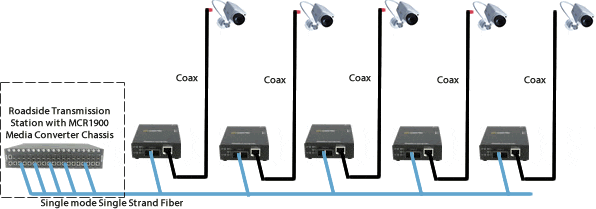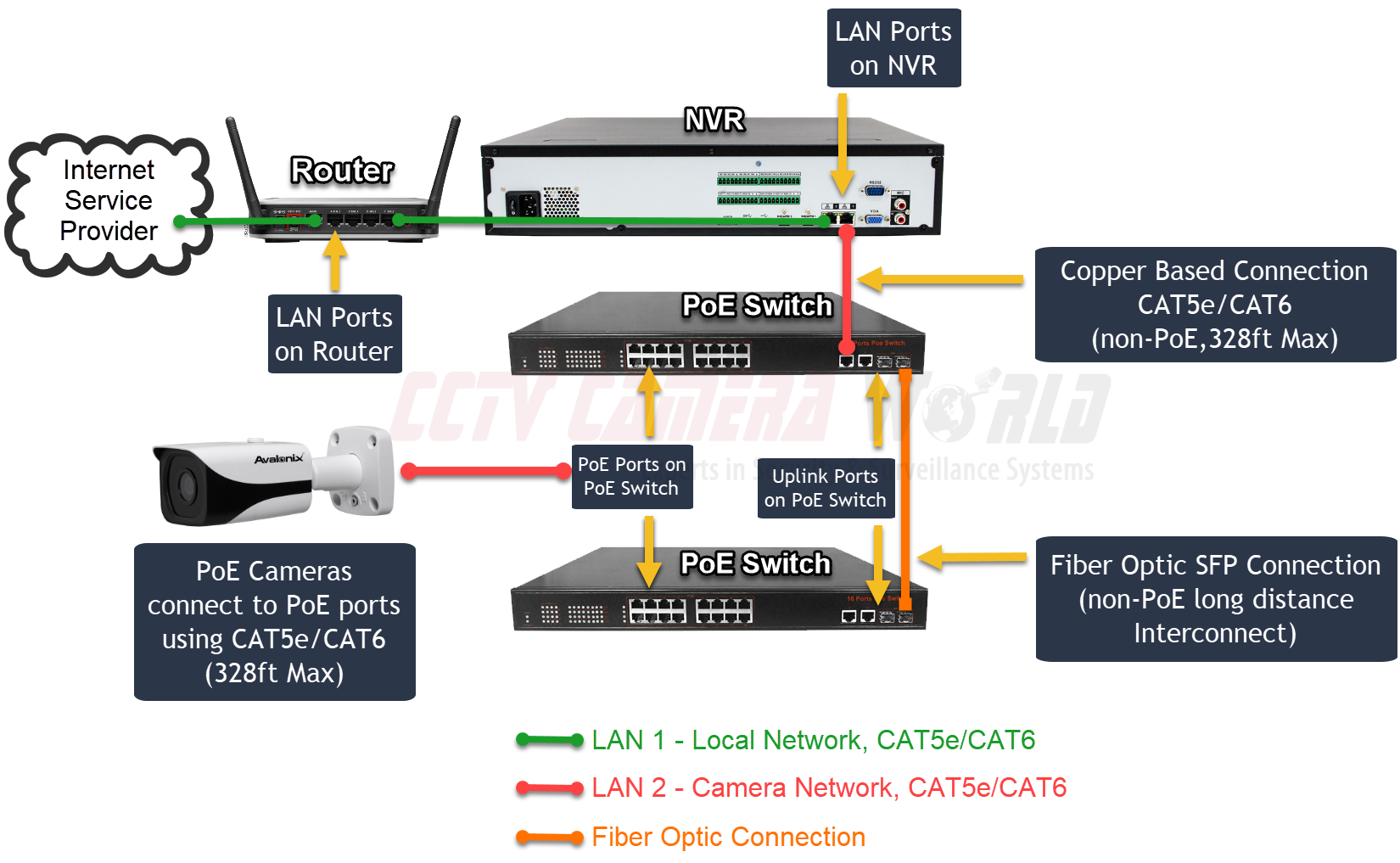Just How CCTV Cameras With Fiber Optic Output Boost Long-Distance Monitoring
CCTV electronic cameras geared up with fiber optic result represent a significant innovation in long-distance monitoring innovation, using unparalleled advantages over traditional systems. By leveraging the homes of light transmission through fiber optics, these cams make sure high-def video quality continues to be undamaged across considerable distances while efficiently mitigating electro-magnetic interference - cctv fibre optic cable.

Recognizing Fiber Optic Innovation
Fiber optic technology is progressively utilized in long-distance tracking applications because of its outstanding ability for information transmission. This technology utilizes thin strands of glass or plastic fibers to transmit data as light signals, substantially minimizing the depletion frequently related to typical copper wires. The integral residential or commercial properties of fiber optics permit for the transmission of big quantities of information over significant ranges without loss of quality, making it an ideal choice for applications requiring reliable interaction.
The principle of total inner reflection promotes the efficient transmission of light within the fiber, making certain high data transfer and speed. Unlike electrical signals in metal cable televisions, fiber optics are immune to electro-magnetic interference, enhancing the integrity of data transmission. This characteristic is particularly important in environments with high levels of electrical sound, such as commercial setups or city locations.
Additionally, fiber optic cables are lighter and extra adaptable than their copper equivalents, which streamlines installment and minimizes architectural load. With their sturdiness and resistance to ecological aspects, optical fiber are well-suited for outside applications, therefore extending the reach of checking systems. Therefore, fiber optic technology is ending up being a cornerstone in contemporary monitoring solutions, effectively dealing with the challenges of long-distance tracking.
Benefits of Fiber Optic CCTV
Making use of fiber optic technology in CCTV systems offers various benefits that improve monitoring capacities. One of the main advantages is the capability to send high-definition video clip over long ranges without substantial signal destruction. Unlike conventional copper cable televisions, optical fiber can maintain video clip top quality over considerable runs, making them suitable for large buildings or remote tracking places.
In addition, fiber optic wires are much less susceptible to electro-magnetic disturbance, which can misshape signals in conventional systems. This makes certain clearer photos and nonstop service, essential for safety and security monitoring. Fiber optics are inherently a lot more safe, as obstructing signals requires specialized tools, thus providing an extra layer of defense versus unauthorized access.
The lightweight and small nature of fiber optic cords also simplifies installation, allowing less complicated transmitting via tight spaces and lowering total labor expenses. Their longevity makes them resistant to environmental factors such as moisture and temperature level changes, prolonging the life-span of the security system.
Lastly, fiber optic systems can sustain a greater number of cams on a solitary network, optimizing resources and supplying scalability for future expansion. These benefits make fiber optic CCTV systems a superior choice for modern surveillance requirements.
Comparison With Traditional Solutions
When contrasting CCTV systems, traditional configurations often fall brief in numerous key areas, especially in regards to distance and signal honesty. Conventional coaxial wire systems generally this post deal with substantial signal degradation over fars away, restricting effective monitoring varies to roughly 300 feet (cctv fibre optic cable). Past this limit, photo quality diminishes, leading to prospective unseen areas and lowered security performance
In contrast, fiber optic systems maintain signal integrity over a lot better ranges, usually exceeding several miles without loss of quality. This is largely due to their ability to transfer data as light signals, which are less susceptible to electromagnetic disturbance than electric signals made use of in standard systems.
Furthermore, standard systems need much more comprehensive maintenance and troubleshooting due to their susceptability to ecological aspects such as moisture and electromagnetic sound. Fiber optic systems, conversely, deal improved durability and reduced upkeep expenses, as they are less vulnerable to damages.
Applications in Long-Distance Monitoring
The benefits of contemporary CCTV systems in maintaining signal honesty over fars away open a large range of applications for long-distance surveillance. One substantial application is in city monitoring, where communities deploy fiber optic CCTV systems to monitor public rooms, enhancing safety and security and preventing criminal activity. These systems supply continuous, high-grade video feeds that are crucial for efficient police and emergency situation reaction.
One more important application remains in industrial setups, where remote surveillance of making procedures and dangerous areas is vital. Fiber optic CCTV can stand up to severe atmospheres and transmit data over long distances without loss of top quality, permitting real-time oversight and decreasing risks to employees.
Furthermore, crucial facilities such as airport terminals, trains, and pipes gain from long-distance CCTV monitoring. Security groups can oversee big locations from systematized control areas, ensuring rapid response to any incidents.
Moreover, in agricultural setups, farmers utilize long-distance CCTV to monitor plants and animals, assisting to improve productivity and safety and security. In general, the flexibility and reliability of fiber optic CCTV systems make them essential click to investigate across numerous fields, allowing thorough security options tailored to details demands.
Future Patterns in Surveillance Modern Technology
Just how will improvements in innovation reshape the landscape of security? The future of monitoring technology click here now is positioned for considerable transformation, driven by innovations such as expert system (AI), artificial intelligence, and side computing. These modern technologies allow real-time data evaluation, enabling fast recognition of potential dangers and boosted situational recognition.
AI-powered analytics will boost the accuracy of face recognition systems, minimizing false positives and allowing extra effective monitoring of individuals. In addition, the integration of Net of Things (IoT) gadgets will certainly facilitate a smooth network of interconnected security systems, improving surveillance capabilities across huge areas.
Another fad is the shift towards cloud-based storage space solutions, which provide scalable data administration and ease of access. This will certainly permit companies to store large amounts of video data without the restrictions of physical storage, while making sure that info is conveniently retrievable.

Conclusion
In final thought, CCTV cameras equipped with fiber optic result represent a substantial advancement in long-distance tracking abilities. The application of fiber optic modern technology ensures high-definition video transmission over extensive ranges without high quality destruction, while also supplying resistance to electromagnetic interference. The lightweight and adaptable nature of these systems promotes streamlined setup and resource optimization. As security innovation remains to advance, the adoption of fiber optic solutions will likely play a crucial duty in improving safety and security across varied applications.
Comments on “The Key Benefits of Implementing a Fiber Optic Security Camera in Your Security Setup”